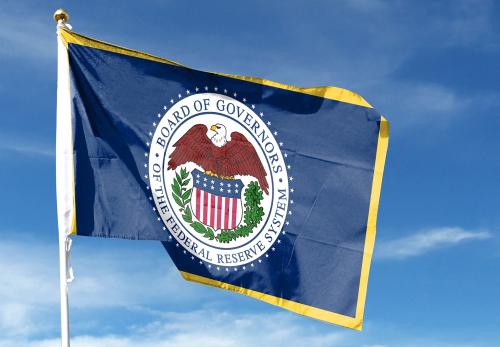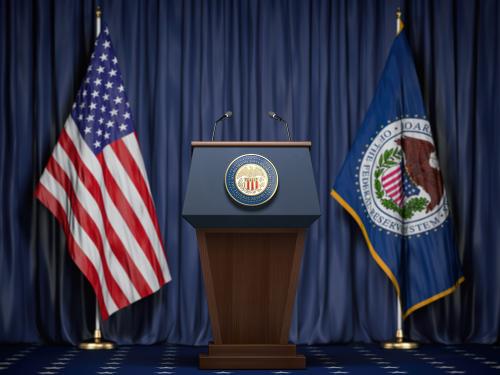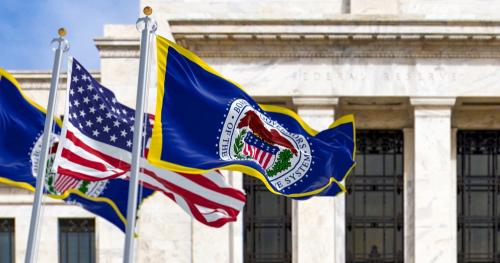As the Federal Reserve undertook the promised every-five-year review of its statement of longer-run goals and monetary policy strategy, it got a lot of advice. The revised framework, unveiled by Fed Chair Jerome Powell at the Jackson Hole conclave in August 2025, shows that the Fed listened. Not only did the Fed respond to the changing economic environment and lessons it had learned during the pandemic, it took much of the advice it had been offered, including suggestions made by participants in Hutchins Center on Fiscal & Monetary Policy and Brookings Papers on Economic Activity conferences.
Back in August 2020, the Fed issued a framework that reflected its struggle to get inflation up to its 2% target and the memory that short-term interest rates were stuck at zero for seven years after the Global Financial Crisis of 2007-9. “At the time of the last review,” Powell said at Jackson Hole 2025, “we were living in a new normal, characterized by the proximity of interest rates to the effective lower bound (ELB) along with low growth, low inflation, and a very flat Phillips curve—meaning that inflation was not very responsive to slack in the economy.” The 2020 revisions proved to be ill-timed: The problem on the horizon was not too little inflation but too much—the worst inflation in 40 years.
So what changed? And why?
Angst about zero interest rates has abated
The 2020 statement said:
“The Committee judges that the level of the federal funds rate consistent with maximum employment and price stability over the longer run has declined relative to its historical average. Therefore, the federal funds rate is likely to be constrained by its effective lower bound more frequently than in the past. Owing in part to the proximity of interest rates to the effective lower bound, the Committee judges that downward risks to employment and inflation have increased.”
Today, the risks that the Fed will have to push short-term interest rates to zero to boost the economy and head off deflation remain, but are substantially diminished. What’s more, inflation has been persistently above the Fed’s target. As Christina Romer, a professor of economics emeritus at the University of California, Berkeley, put it at a June 2024 Hutchins Center panel: “The problem was setting up a framework that almost didn’t recognize that you could end up in a place where you could have very high inflation.”
So the new 2025 statement drops that old language and says:
“The Committee’s monetary policy strategy is designed to promote maximum employment and stable prices across a broad range of economic conditions.”
Deleting the “average” in Flexible Average Inflation Targeting (FAIT)
The 2020 statement said:
“In order to anchor longer-term inflation expectations at this level, the Committee seeks to achieve inflation that averages 2 percent over time, and therefore judges that, following periods when inflation has been running persistently below 2 percent, appropriate monetary policy will likely aim to achieve inflation moderately above 2 percent for some time.”
“As it turned out,” Powell said at Jackson Hole 2025, “the idea of an intentional, moderate inflation overshoot had proved irrelevant. There was nothing intentional or moderate about the inflation that arrived a few months after we announced our 2020 changes to the consensus statement, as I acknowledged publicly in 2021.”
Former Fed staff economists Brian Sack and William B. English urged the Fed to give up on FAIT and return to a “more traditional inflation targeting.” They wrote in September 2024: “The goal of 2 percent average inflation over time is specific and could help the public form expectations for policy. However, it is greatly weakened by the lack of a clear period of averaging, as well as of information on the size and duration of the possible overshooting. Given the lack of specificity, it seems unlikely that this part of the framework document contributes greatly to shaping the public’s expectations for policy. Moreover, the shift to average inflation targeting is a potential source of confusion after a period of high inflation.”
So the Fed has dropped the pledge to encourage above-target inflation for a time after a period of below-target inflation. It is now pursuing what central bankers call “flexible inflation targeting,” without the “average.”
The 2025 statement:
“The Committee reaffirms its judgment that inflation at the rate of 2 percent, as measured by the annual change in the price index for personal consumption expenditures, is most consistent over the longer run with the Federal Reserve’s statutory maximum employment and price stability mandates.”
Goodbye “shortfalls”
The 2020 statement:
“The Committee’s policy decisions must be informed by assessments of the shortfalls of employment from its maximum level.”
The 2020 statement substituted the word “shortfalls” for “deviations,” the latter of which had been in earlier versions of the Fed framework. That change was widely interpreted as suggesting that the Fed would react more aggressively to lower interest rates when the job market was weak than it would to raise rates when the job market was on the verge of overheating and triggering unwelcome inflation. Indeed, Powell said back in 2020 that the change in wording “may appear subtle, but it reflects our view that a robust job market can be sustained without causing an outbreak of inflation.”
In his Jackson Hole 2025 remarks, Powell insisted that “the use of ‘shortfalls’ was not intended as a commitment to permanently forswear preemption or to ignore labor market tightness. Accordingly, we removed ‘shortfalls’ from our statement.” Still, the Fed says that it won’t automatically raise interest rates when the job market is hot.
The 2025 statement:
“The Committee recognizes that employment may at times run above real-time assessments of maximum employment without necessarily creating risks to price stability.”
Goodbye “broad-based and inclusive”
The 2020 statement:
“The maximum level of employment is a broad-based and inclusive goal… In setting monetary policy, the Committee seeks over time to mitigate shortfalls of employment from the Committee’s assessment of its maximum level and deviations of inflation from its longer-run goal.”
At a June 2024 panel, Don Kohn, the former Fed vice chair now at the Hutchins Center, said: “I think a really key point about maximum employment is it has to be consistent with price stability. I’d like to see that included in the strategy itself. Yes, running the labor market hot is great, and it helps certain groups more than others… But it’s not the Fed’s job to make up for various inequities in society. It’s really hard to hit those two goals [of price stability and maximum employment]. And I think defining [the] maximum employment goal so it’s consistent with the price stability goal would be helpful in focusing [the Fed] where they need to be.”
The 2025 statement:
“Durably achieving maximum employment fosters broad-based economic opportunities and benefits for all Americans. The Committee views maximum employment as the highest level of employment that can be achieved on a sustained basis in a context of price stability…”
“Balanced,” not asymmetrical, when goals are in conflict
The 2020 statement:
“[U]nder circumstances in which the Committee judges that the objectives are not complementary, it takes into account the employment shortfalls and inflation deviations and the potentially different time horizons over which employment and inflation are projected to return to levels judged consistent with its mandate.”
The reference to “shortfalls” from maximum employment and “deviations” of inflation from the target was seen as imprudently asymmetrical by some observers. “We would drop the indication that policy depends on shortfalls from maximum employment rather than deviations from maximum employment. It seems unwise for the Committee to restrict its ability to be preemptive and hence unable to respond to an expectation of overheating,” English and Sack wrote.
As Powell explained in Jackson Hole 2025: “Consistent with the removal of ‘shortfalls,’ we made changes to clarify our approach in periods when our employment and inflation objectives are not complementary. In those circumstances, we will follow a balanced approach in promoting them. The revised statement now more closely aligns with the original 2012 language. We take into account the extent of departures from our goals and the potentially different time horizons over which each is projected to return to a level consistent with our dual mandate. These principles guide our policy decisions today, as they did over the 2022–24 period, when the departure from our 2 percent inflation target was the overriding concern.”
The 2025 statement:
“The Committee’s employment and inflation objectives are generally complementary. However, if the Committee judges that the objectives are not complementary, it follows a balanced approach in promoting them, taking into account the extent of departures from its goals and the potentially different time horizons over which employment and inflation are projected to return to levels judged consistent with its mandate.”
What did the Fed put off?
The Fed says it is still considering changes to its communications, particularly its quarterly “summary of economic projections,” which has drawn occasional criticism, including from former Fed Chair Ben Bernanke. The Fed says it will say more about communications later this year.
What did the Fed not do?
The Fed said it wouldn’t revisit the 2% inflation target in this year’s review, and it didn’t. Even advocates for a higher inflation target say raising it when inflation is above 2% is unwise. But Kohn said, “Maybe it’s the right goal. But I think it would be very helpful to the commitment of the central bank and the understanding of both the financial markets and general public to know if they end up at two, why two is the right goal… [Many] academics would make it higher. The general public would make it lower. Where do you end up, and why did you end up [there]?”
It did not, despite some urgings from outside the Fed, offer any new insight into the conditions that it believes will warrant deploying what are sometimes called unconventional monetary policy tools—forward guidance and quantitative easing—nor how they might be deployed, nor what lessons it learned from the use of these tools during the pandemic.
The Brookings Institution is committed to quality, independence, and impact.
We are supported by a diverse array of funders. In line with our values and policies, each Brookings publication represents the sole views of its author(s).






Commentary
The Fed does listen: How it revised the monetary policy framework
August 28, 2025